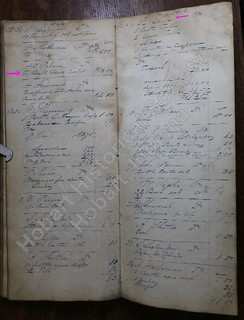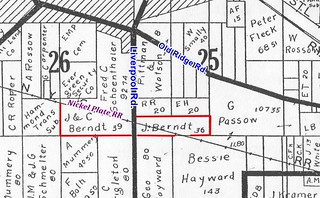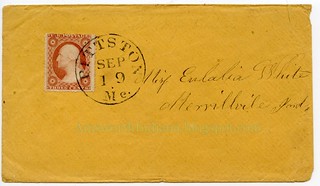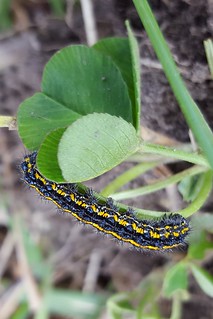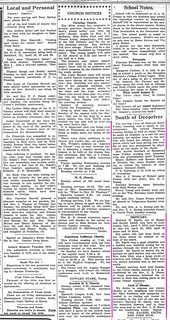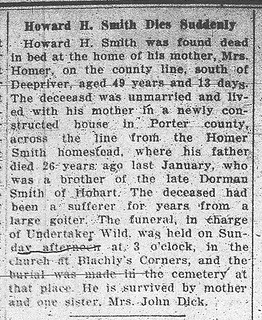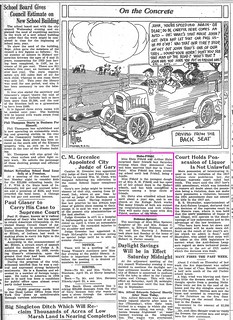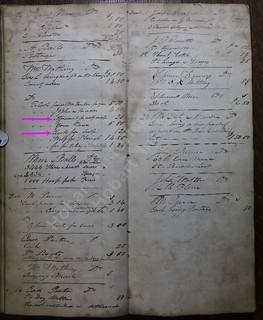Among the siblings of
F.F. Frank was a brother named Moses, who was born in Michigan in 1852, died in Hobart in 1874, and was buried in the
Hobart Cemetery.
This is not that Moses Frank. This is the
other Moses Frank of Hobart.
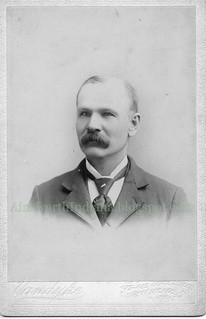 (Click on images to enlarge)
(Click on images to enlarge)
This Moses Frank was born in Canada in 1848. Per the
1910 Census, he came to the U.S. in 1862. He seems to have been in Indiana by 1865. I do not know whether he came directly to Hobart — and if so, he was away for several months in the Union Army, having joined as a substitute in March 1865
[1] — but by 1868 he had been here long enough to court Sarah Peters, who married him the day after Valentine's Day (
Indiana Marriage Collection).
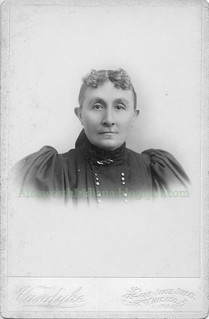
Sarah's parents were native to New York, then moved their family to Michigan where Sarah was born circa 1847, but moved back to New York by the
1850 Census and were still there in 1855.
[2] When Moses arrived in Hobart, Sarah's family had been farming locally for at least two years (
1860 Census).
The
1870 Census shows the young couple keeping house in Hobart; Moses worked as a "brick maker." Sarah's sister Debby, a dressmaker, is listed in that household.
[3]
When the
1880 Census came around, Moses was still making bricks. He'd also made a couple of children (May Zaretta and Winfield). His mother, Hannah, lived in his home.
Sometime between 1880 and the
1900 Census, Moses left Hobart and brick-making forever. He and Sarah moved to Chicago and he went into the railroad-car-inspecting business. Moses died in 1917, Sarah in 1931, and both are buried in
Chicago.
These photographs are undated (and I have failed to trace the photographer), but judging by Sarah's very full sleeves I'd say they were taken in the late 1890s.
If there is any family connection between this Moses Frank and the other Moses Frank, I have not uncovered it.
I guess the point is … once a brickie, not always a brickie. Or maybe there is no point, but I bought these photos a long time ago and so obviously I simply had to write a blog post about them. Yes, sometimes I even bore
myself with this stuff.
_______________
[1] Historical Data Systems, comp. U.S., Civil War Soldier Records and Profiles, 1861-1865 [database on-line]. Provo, UT, USA: Ancestry.com Operations Inc, 2009.
[2] Ancestry.com. New York, State Census, 1855 [database on-line]. Provo, UT, USA: Ancestry.com Operations, Inc., 2013. Original data: Census of the state of New York, for 1855. Microfilm. New York State Archives, Albany, New York.
[3] Deborah is also listed in the household of her parents, who were still farming near Hobart. By the 1880 Census, it appears that all members of the Peters family had either left the area or changed their surnames, except possibly brother George. After 1880, I lose all track of them.
